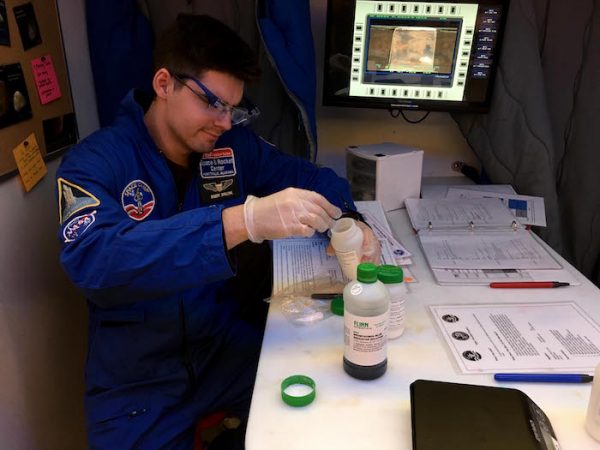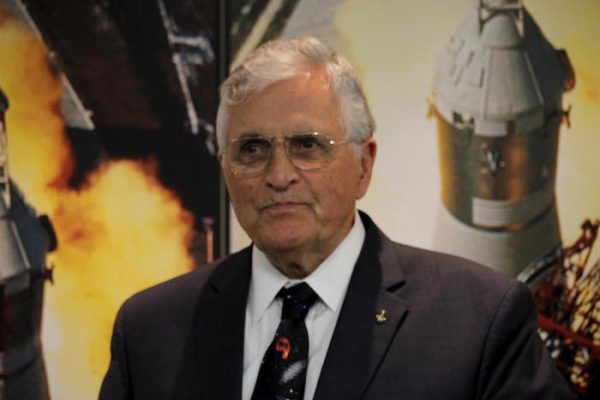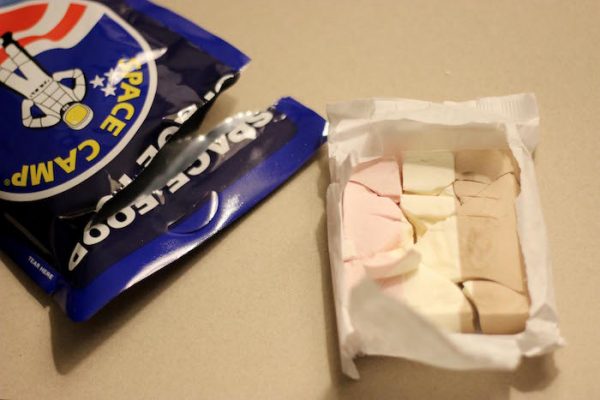
Our space camp instructor promoted me to Chief Research Scientist during our Mars mission for what I like to think was my competency and professionalism as Capsule Communicator during the previous day's mission.
I brought absolutely none of those qualities to our "base" on Phobos in a mock set-up designed for 9 to 11 year olds. After detailing rocks from the Mars' moon's "surface," I was tasked with conducting an experiment involving a chemical reaction inside a Ziploc baggie. Having spent most of my education nodding off through chemistry class, I was completely unfamiliar with my task. 
So I should have expected I would mix the wrong chemicals after carelessly picking up a different bottle. No explosion on our end, but instead of causing a reaction that would cool the bag and make it inflate, I created a substance now known as "space gravy." It's unfortunate Sodium Bicarbonate and Sodium Polyacrylate look so similar.
Slightly less unfortunate was meeting my first astronaut. The final night of camp happened to feature a dinner to honor Apollo 17 astronaut Harrison "Jack" Schmitt 45 years after his mission.
Dr. Schmitt, 82, a former U.S. senator from New Mexico and a geologist, is the only scientist to add his footsteps to the surface of the moon. He also happens to be a climate change denier. 
"Unfortunately, science at least in the United States has become biased to what governments want to do and that's not objective science," Schmitt said during a press conference before his dinner. "Science is really the process of questioning what you think you know."
It seemed a bit hard to personally reconcile Schmitt's incredible NASA and science background with his current stance on science and climate change. I'm still unapologetically glad I had the opportunity to be in the same room as an Apollo astronaut.
Schmitt also says the U.S. Space Program should be focused on returning to the moon, then setting our adventure sights on Mars for exploration – not terraforming it.
It's also a starkly different vision with what many other space experts are expecting from future missions. Television shows like National Geographic's Mars are detailing a future a little over a decade away when the first colony will be thriving on the red planet.
"We can [complete] the basic terraforming of Mars where we raise the temperature high enough so that there's flowing water on the surface at least in day time," said Stephen Petranek, author of How We'll Live on Mars, during a press junket earlier in the day promoting the show's upcoming season.
"To have an environment, with the exception of the fact that we can't breathe the air, but an environment which can be very similar to southern Canada. We can have that in 30 years. We can probably have it in 20 years. It depends how much money you're willing to spend."
Petranek also pointed to how Huntsville's Space Camp has even become heavily focused on the Mars initiative in the last few years. I'm not sure if I learned enough at Space Camp to decide what the future of U.S. and private space programs will be able to achieve and give a proper estimate. That didn't stop the camp from giving me an "advanced" space academy degree.
However, what I did learn is that astronaut ice cream is sold at the center's gift shop. I should have considered myself lucky when I couldn't find it at the cafeteria the previous day. 


